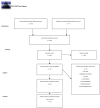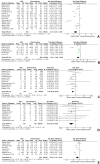Use of High Energy Devices (HEDs) versus electrocautery for laparoscopic cholecystectomy: a systematic review and meta-analysis of randomised controlled trials
- PMID: 37074420
- PMCID: PMC10235147
- DOI: 10.1007/s00464-023-10060-7
Use of High Energy Devices (HEDs) versus electrocautery for laparoscopic cholecystectomy: a systematic review and meta-analysis of randomised controlled trials
Abstract
Introduction: According to the literature, there is no clear definition of a High Energy Devices (HEDs), and their proper indications for use are also unclear. Nevertheless, the flourishing market of HEDs could make their choice in daily clinical practice arduous, possibly increasing the risk of improper use for a lack of specific training. At the same time, the diffusion of HEDs impacts the economic asset of the healthcare systems. This study aims to assess the efficacy and safety of HEDs compared to electrocautery devices while performing laparoscopic cholecystectomy (LC).
Materials and methods: On behalf of the Italian Society of Endoscopic Surgery and New Technologies, experts performed a systematic review and meta-analysis and synthesised the evidence assessing the efficacy and safety of HEDs compared to electrocautery devices while performing laparoscopic cholecystectomy (LC). Only randomised controlled trials (RCTs) and comparative observational studies were included. Outcomes were: operating time, bleeding, intra-operative and post-operative complications, length of hospital stay, costs, and exposition to surgical smoke. The review was registered on PROSPERO (CRD42021250447).
Results: Twenty-six studies were included: 21 RCTs, one prospective parallel arm comparative non-RCT, and one retrospective cohort study, while three were prospective comparative studies. Most of the studies included laparoscopic cholecystectomy performed in an elective setting. All the studies but three analysed the outcomes deriving from the utilisation of US sources of energy compared to electrocautery. Operative time was significantly shorter in the HED group compared to the electrocautery group (15 studies, 1938 patients; SMD - 1.33; 95% CI - 1.89 to 0.78; I2 = 97%, Random-effect). No other statistically significant differences were found in the other examined variables.
Conclusions: HEDs seem to have a superiority over Electrocautery while performing LC in terms of operative time, while no difference was observed in terms of length of hospitalisation and blood loss. No concerns about safety were raised.
Keywords: Cholecystectomy; High Energy Devices; Laparosocpic surgery.
© 2023. The Author(s).
Figures



Similar articles
-
Systemic pharmacological treatments for chronic plaque psoriasis: a network meta-analysis.Cochrane Database Syst Rev. 2021 Apr 19;4(4):CD011535. doi: 10.1002/14651858.CD011535.pub4. Cochrane Database Syst Rev. 2021. Update in: Cochrane Database Syst Rev. 2022 May 23;5:CD011535. doi: 10.1002/14651858.CD011535.pub5. PMID: 33871055 Free PMC article. Updated.
-
Systemic pharmacological treatments for chronic plaque psoriasis: a network meta-analysis.Cochrane Database Syst Rev. 2017 Dec 22;12(12):CD011535. doi: 10.1002/14651858.CD011535.pub2. Cochrane Database Syst Rev. 2017. Update in: Cochrane Database Syst Rev. 2020 Jan 9;1:CD011535. doi: 10.1002/14651858.CD011535.pub3. PMID: 29271481 Free PMC article. Updated.
-
Home treatment for mental health problems: a systematic review.Health Technol Assess. 2001;5(15):1-139. doi: 10.3310/hta5150. Health Technol Assess. 2001. PMID: 11532236
-
Intraperitoneal local anaesthetic instillation versus no intraperitoneal local anaesthetic instillation for laparoscopic cholecystectomy.Cochrane Database Syst Rev. 2021 Oct 25;10(10):CD007337. doi: 10.1002/14651858.CD007337.pub4. Cochrane Database Syst Rev. 2021. PMID: 34693999 Free PMC article.
-
Intravenous magnesium sulphate and sotalol for prevention of atrial fibrillation after coronary artery bypass surgery: a systematic review and economic evaluation.Health Technol Assess. 2008 Jun;12(28):iii-iv, ix-95. doi: 10.3310/hta12280. Health Technol Assess. 2008. PMID: 18547499
Cited by
-
Systematic review on the use of artificial intelligence to identify anatomical structures during laparoscopic cholecystectomy: a tool towards the future.Langenbecks Arch Surg. 2025 Mar 18;410(1):101. doi: 10.1007/s00423-025-03651-6. Langenbecks Arch Surg. 2025. PMID: 40100424 Free PMC article.
-
Systematic review and meta-analysis of the use of high-energy devices for thyroid surgery.Langenbecks Arch Surg. 2024 Jul 17;409(1):217. doi: 10.1007/s00423-024-03399-5. Langenbecks Arch Surg. 2024. PMID: 39017727
-
Robotic-assisted laparoscopic radical nephrectomy and lymph nodes dissection using Senhance robotic system and Senhance ultrasonic energy device: A case report.Clin Case Rep. 2024 Aug 6;12(8):e9117. doi: 10.1002/ccr3.9117. eCollection 2024 Aug. Clin Case Rep. 2024. PMID: 39114833 Free PMC article.
References
-
- Botteri E, Podda M, Arezzo A, Vettoretto N, Sartori A, Agrusa A, Allaix ME, Anania G, BrachetContul R, Caracino V, Cassinotti E, Cuccurullo D, D’Ambrosio G, Milone M, Muttillo I, Petz WL, Pisano M, Guerrieri M, Silecchia G, Agresta F. Current status on the adoption of high energy devices in Italy: An Italian Society for Endoscopic Surgery and New Technologies (SICE) national survey. Surg Endosc. 2021;35(11):6201–6211. doi: 10.1007/s00464-020-08117-y. - DOI - PMC - PubMed
-
- Agresta F, Campanile FC, Vettoretto N, Silecchia G, Bergamini C, Maida P, Lombari P, Narilli P, Marchi D, Carrara A, Esposito MG, Fiume S, Miranda G, Barlera S, Davoli M, Italian Surgical Societies Working Group Laparoscopic cholecystectomy: consensus conference-based guidelines. Langenbecks Arch Surg. 2015;400(4):429–453. doi: 10.1007/s00423-015-1300-4. - DOI - PubMed

